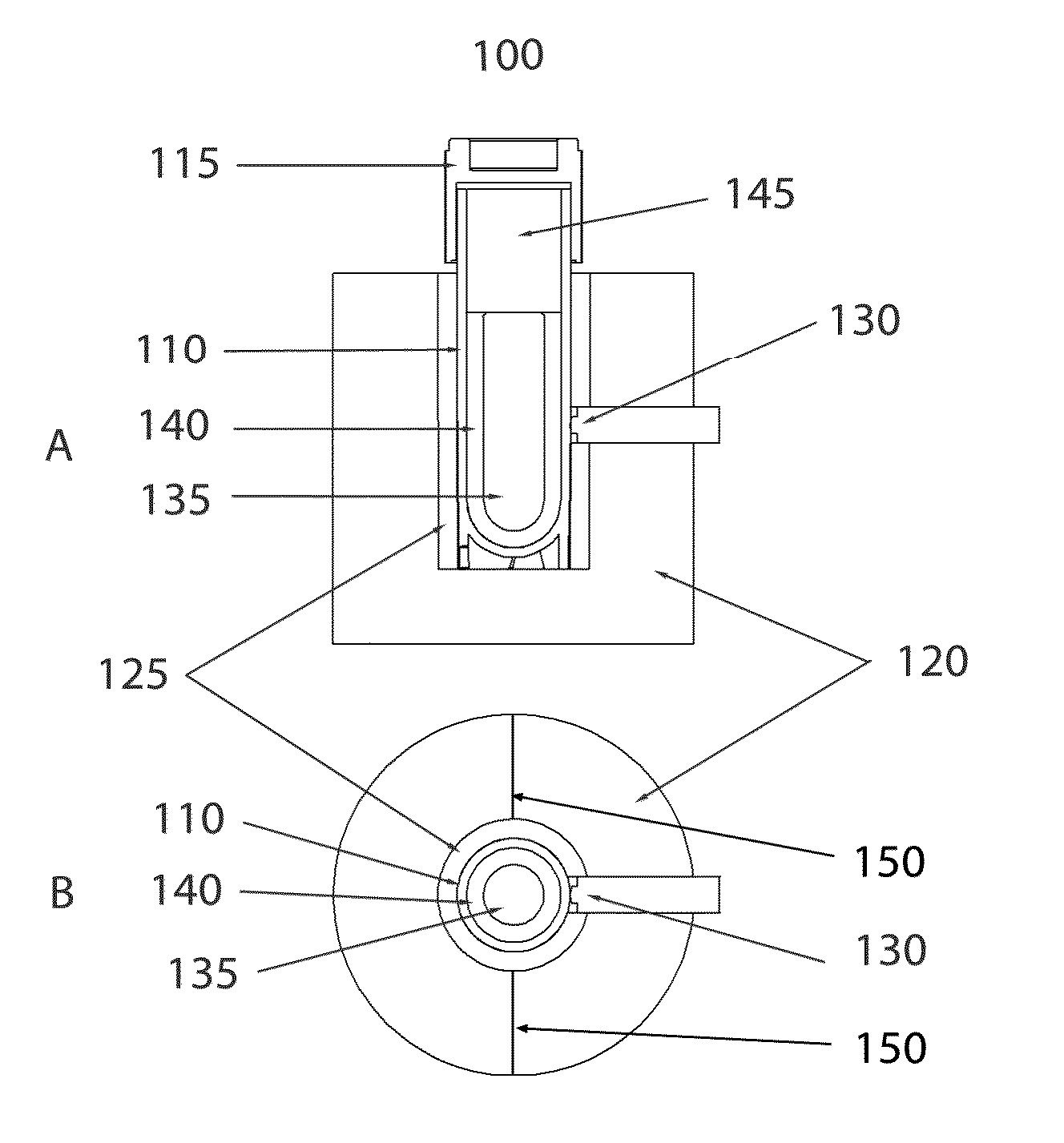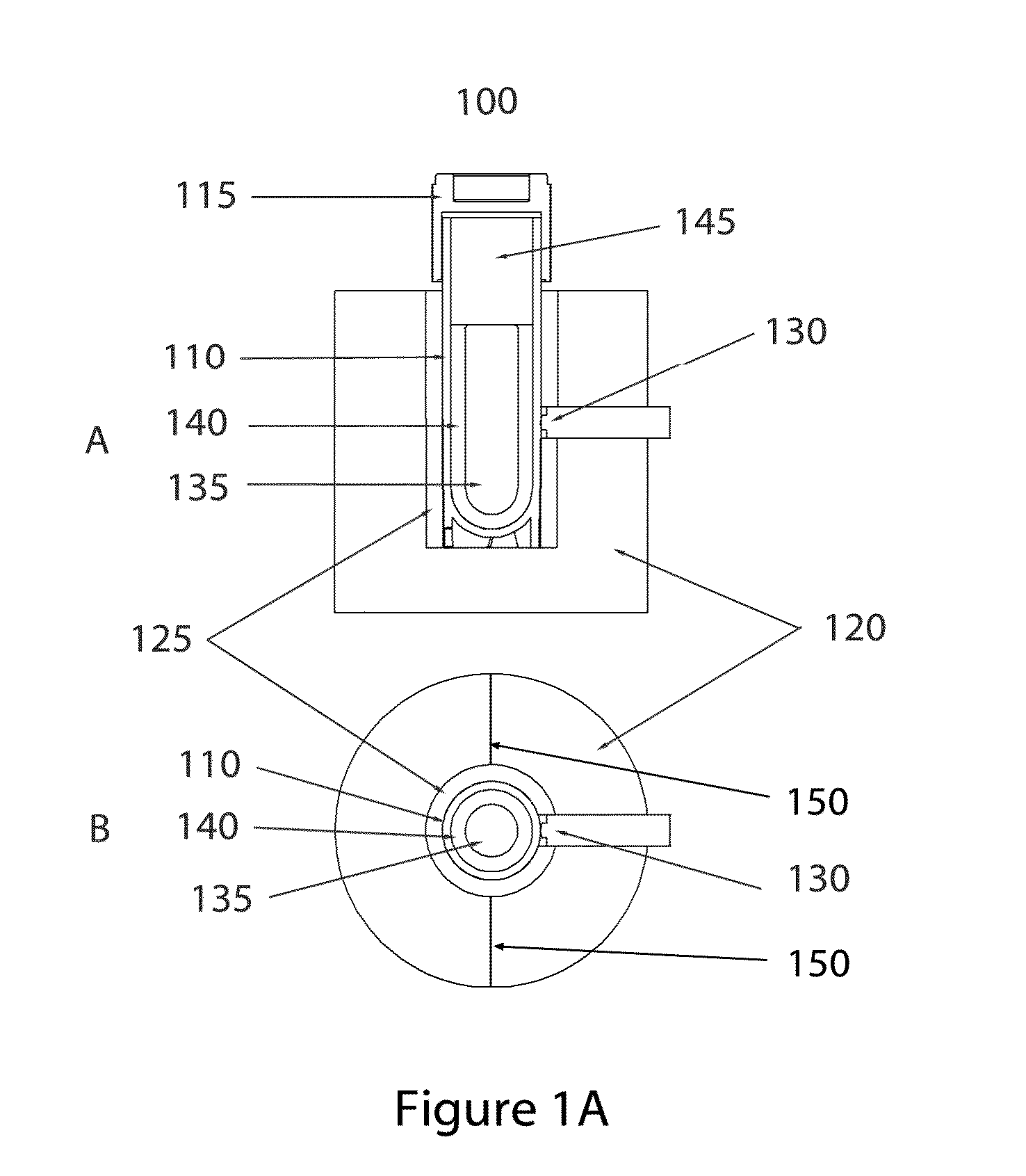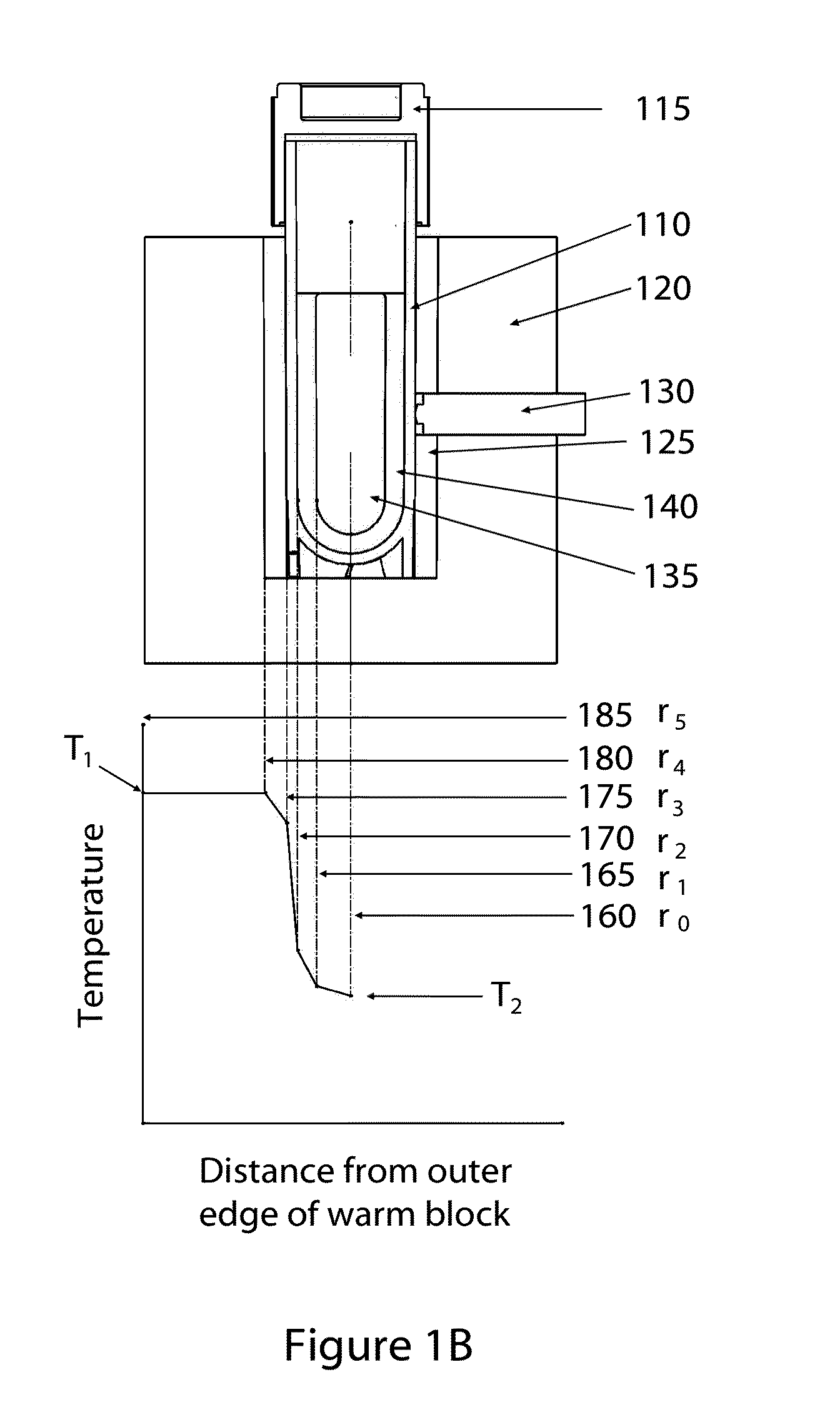Systems, Devices, and Methods for Automated Sample Thawing
a technology of automated thawing and sample, applied in the field of cryogenic preservation of cells, can solve the problems of reducing the thaw interval, affecting the thaw rate of samples or samples that have been allowed to become too warm, and affecting the thaw rate, so as to reduce the thaw interval, reduce the damage from ice, and the thaw rate is as rapid
- Summary
- Abstract
- Description
- Claims
- Application Information
AI Technical Summary
Benefits of technology
Problems solved by technology
Method used
Image
Examples
Embodiment Construction
[0064]The subject matter of embodiments of the present invention is described here with specificity, but this description is not necessarily intended to limit the scope of the claims. The claimed subject matter may be embodied in other ways, may include different elements or steps, and may be used in conjunction with other existing or future technologies. This description should not be interpreted as implying any particular order or arrangement among or between various steps or elements except when the order of individual steps or arrangement of elements is explicitly described.
[0065]In some embodiments of the invention, direct liquid contact with the sample vial exterior may be eliminated, as would occur with a partial submersion of the sample in a water bath. As such, in many embodiments of the invention the exterior surface of the sample vial, or in some cases the sample vial exterior plus laminations such as labels or shrink-wrap sleeves, will be in contact only with solid mater...
PUM
| Property | Measurement | Unit |
|---|---|---|
| temperature | aaaaa | aaaaa |
| temperatures | aaaaa | aaaaa |
| temperatures | aaaaa | aaaaa |
Abstract
Description
Claims
Application Information
 Login to View More
Login to View More - R&D
- Intellectual Property
- Life Sciences
- Materials
- Tech Scout
- Unparalleled Data Quality
- Higher Quality Content
- 60% Fewer Hallucinations
Browse by: Latest US Patents, China's latest patents, Technical Efficacy Thesaurus, Application Domain, Technology Topic, Popular Technical Reports.
© 2025 PatSnap. All rights reserved.Legal|Privacy policy|Modern Slavery Act Transparency Statement|Sitemap|About US| Contact US: help@patsnap.com



